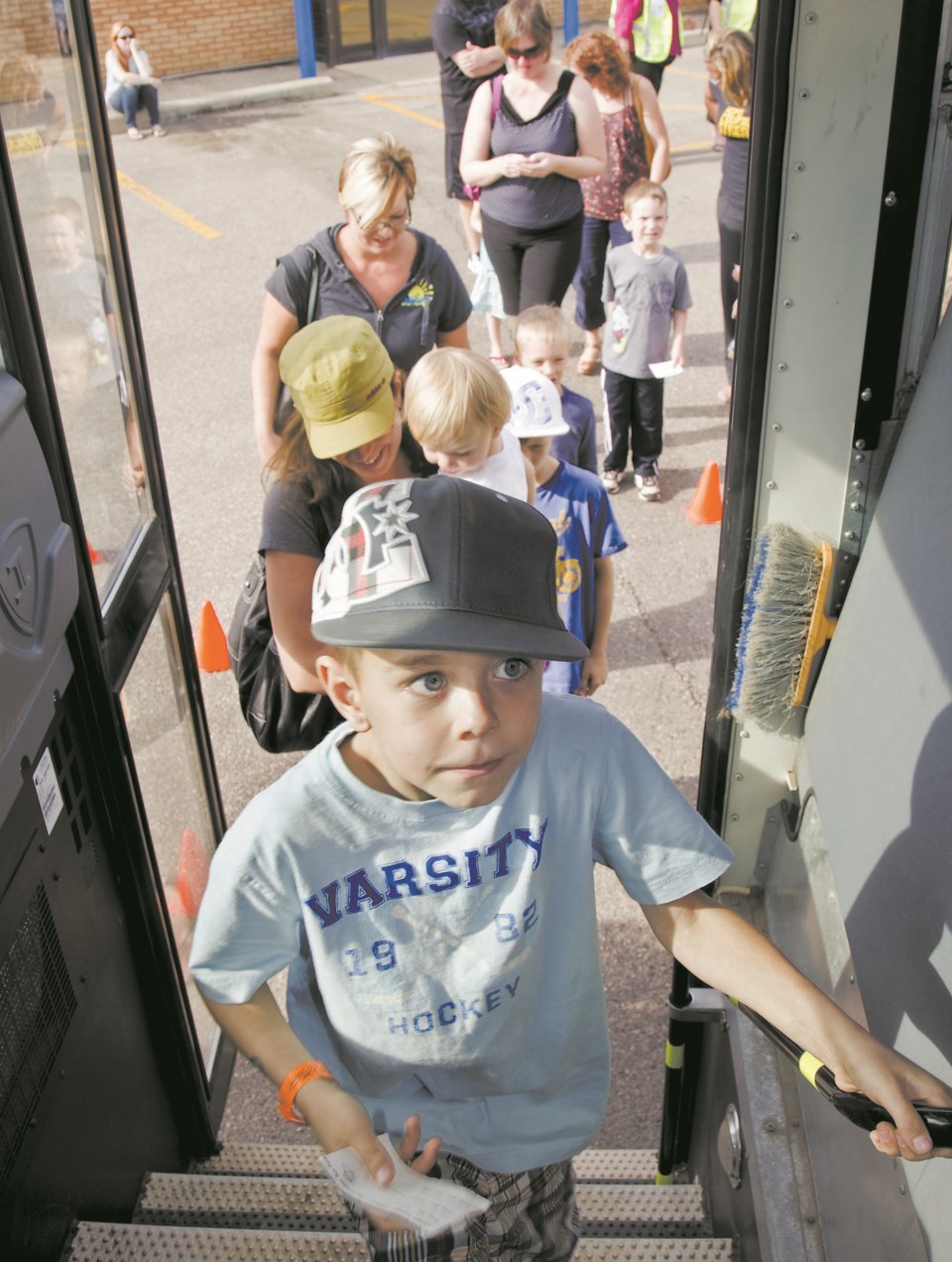More St. Albert students could be riding the bus this fall now that Alberta Education has turbocharged its transportation funding by 32 per cent.
Alberta Education Minister Adriana LaGrange announced March 9 that as of September 1, 2024, the province will lower the minimum distance from which students must live from a school to qualify for bus funding. She elaborated on the changes at a March 14 press conference.
The province subsidizes bus transportation for students who have to walk at least 2.4 km to get to their designated school — a distance often called the walk-limit. Right now, students who live within the 2.4 km walk-limit do not receive provincial bus funding and have to walk/bike/drive to class. Some boards, such as St. Albert Public and Greater St. Albert Catholic, let students within the walk-limit ride the bus if they pay a fee.
LaGrange said parents and other groups have called for the 2.4 km walk-limit to be changed.
“We’re expecting little Grade Oners, Grade Twoers to be walking 2.4 km,” LaGrange said, often through dangerous ravines or across busy roads.
As of September 1, 2024, LaGrange said Kindergarten to Grade 6 students will qualify for bus funding if they live at least one kilometre from school, while Grades 7 to 12 will qualify if they live at least two kilometres from school. These distances will be calculated based on the shortest driving route from school to home instead of the shortest walking route. School boards will be allowed to implement these changes before September 2024 if they wish.
LaGrange said these changes should make about 80,000 more students eligible for bus funding, about 47,000 of whom currently pay a fee to ride the bus. The changes should shorten the amount of time rural students spend on the bus by about nine per cent and save families about $20 million.
LaGrange said Alberta Education will spend about $414 million more on transportation in the next three years ($101 million or 32 per cent more next year) to fund these changes. Her office was also extending its fuel relief funding for buses (which kicks in when gas prices are over $1.25/L) and offering support to hire and train about 350 more bus drivers.
Fall rollout?
GSACRD board chair Joe Becigneul said these announcements were good news, as they could reduce congestion by getting more kids onto buses and out of cars and lower transportation costs for parents.
“It’s wonderful, but they have not taken into account that they are going to need more buses, which means we are going to need more drivers,” he said.
“And the bus companies now are having a hard time getting and keeping drivers.”
Laura Doroshenko, the general manager of Cunningham Transport (which runs buses in St. Albert, Edmonton, and Sturgeon County), said she hoped this new transportation funding would help offset the soaring costs of fuel, training, and vehicle parts.
St. Albert Public treasurer Michael Brenneis welcomed news of the new funding and lower walk-limit. These changes would definitely reduce the board’s transportation deficit and could lead to lower bus fees for families.
Brenneis said the public board hoped to roll out the new walk-limit this September, but said that might not be possible given the nationwide shortage of bus drivers.
Doroshenko said her company was short about 10 to 15 per cent of its usual complement of drivers. While she was optimistic that she would have the drivers needed for a fall rollout, Doroshenko said the province should hire more bus driver examiners to speed up the training process.
“It’s not like you can go out and train a driver in a couple of weeks,” she said.
“It’s a three-to-five-week turnaround time.”
With files from Jennifer Henderson




